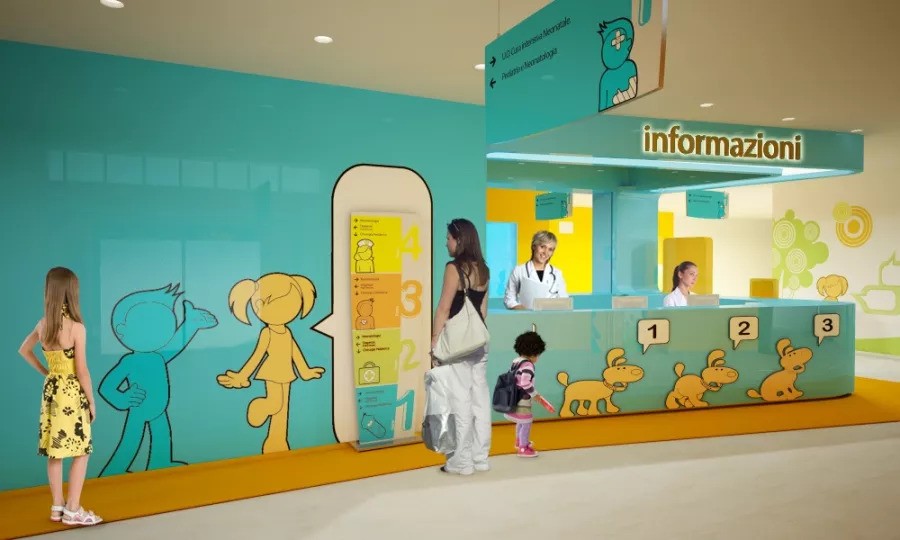
Tomorrow’s Leaders: Innovations in Pediatric Healthcare
In the dynamic landscape of healthcare, innovations continually shape the way we address medical challenges, especially in pediatric care. Tomorrow’s leaders in pediatric healthcare are not only embracing these innovations but are also pioneering new approaches to ensure the well-being of our youngest population. From cutting-edge technology to novel therapies, the future of Leading Pediatric Hospital in Hyderabad looks promising and transformative.
Understanding the Landscape
Pediatric healthcare encompasses a wide array of medical disciplines, ranging from primary care to specialized treatments for complex conditions. The unique needs of children demand tailored approaches that address their physical, emotional, and developmental requirements. As our understanding of pediatric diseases evolves, so too must our strategies for diagnosis, treatment, and prevention.
Embracing Technological Advancements
One of the most significant drivers of innovation in pediatric healthcare is technology. Advances in medical imaging, telemedicine, and wearable devices have revolutionized how we diagnose and manage childhood illnesses.
1. Telemedicine: Telemedicine has emerged as a game-changer, particularly in remote or underserved areas where access to pediatric specialists may be limited. Through virtual consultations, physicians can provide timely care, monitor patients’ progress, and offer guidance to parents, all from a distance.
2. Wearable Devices: Wearable devices equipped with sensors can track vital signs, monitor medication adherence, and detect anomalies in real-time. For children with chronic conditions such as asthma or diabetes, these devices offer a means of continuous monitoring and early intervention, improving outcomes and quality of life.
3. Precision Medicine: The advent of precision medicine allows healthcare providers to tailor treatment plans based on a child’s genetic makeup, metabolic profile, and other individual factors. This personalized approach holds tremendous promise for conditions with a genetic component, such as cystic fibrosis, cancer, and rare diseases.
Advancements in Pediatric Therapies
In addition to technological innovations, breakthroughs in pediatric therapies are transforming the landscape of care for children with complex medical needs.
1. Gene Therapy: Gene therapy holds immense potential for treating genetic disorders that were once considered incurable. By delivering functional genes to replace or correct defective ones, gene therapy offers hope to children with conditions like muscular dystrophy, sickle cell disease, and spinal muscular atrophy.
2. Immunotherapy: Immunotherapy, including chimeric antigen receptor (CAR) T-cell therapy, has revolutionized the treatment of pediatric cancers. By harnessing the power of the immune system to target cancer cells, these therapies have achieved remarkable success rates in children with leukemia, lymphoma, and certain solid tumors.
3. Regenerative Medicine: Regenerative medicine approaches, such as stem cell therapy and tissue engineering, hold promise for repairing damaged tissues and organs in pediatric patients. From congenital heart defects to spinal cord injuries, regenerative therapies offer hope for restoring function and improving quality of life.
Fostering Collaboration and Innovation
The future of pediatric healthcare lies not only in technological advancements and novel therapies but also in fostering collaboration among healthcare professionals, researchers, policymakers, and patient advocates. By breaking down silos and sharing knowledge, we can accelerate the pace of innovation and ensure that breakthroughs reach those who need them most.
1. Multidisciplinary Care Teams: Collaborative care models that bring together specialists from various disciplines enable comprehensive, patient-centered approaches to pediatric healthcare. By tapping into the expertise of pediatricians, nurses, surgeons, psychologists, and social workers, we can address the complex needs of children and their families more effectively.
2. Research and Development: Investing in pediatric research and development is essential for driving innovation and addressing unmet medical needs. Government agencies, academic institutions, philanthropic organizations, and industry partners play crucial roles in funding research initiatives and translating discoveries into clinical practice.
3. Advocacy and Education: Advocacy efforts aimed at raising awareness about pediatric health issues and advocating for policies that support children’s health are essential for driving positive change. Additionally, educating healthcare professionals, caregivers, and the general public about the latest advancements in pediatric healthcare empowers individuals to make informed decisions and actively participate in their children’s care.
Conclusion
As we look ahead to the future of pediatric healthcare, it is evident that innovation will continue to shape the landscape, empowering healthcare providers to deliver more precise, personalized, and effective care to children around the world.